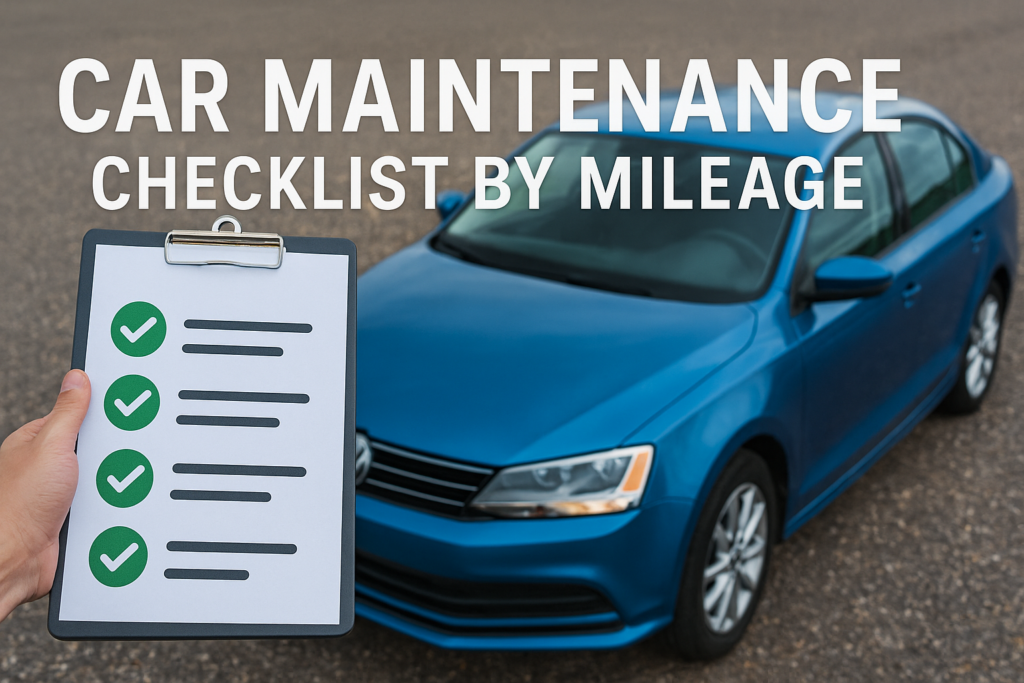If you’re like the majority of drivers, you aren’t thinking of your tires every day until you encounter an issue. However, being aware of “how often should I rotate tires” could have a significant impact on the performance of your car, its safety, and perhaps even your budget.
As you wouldn’t wear identical shoes each day, without seeing eventually the wear the wear, the tires will be subject to the same sort of stress. What’s the difference? Neglecting them could result in costly repairs, ineffective handling, and lower efficiency.
Let’s get into all you need to know regarding the rotation of tires beginning with the basics and concluding with the advanced techniques that most motorists do not know.
- How Often Should I Rotate Tires Reddit: What Real Drivers Say
- How Often Should Tires Be Rotated and Balanced?
- How Often to Rotate Tires If You Don't Drive Much
- When Not to Rotate Tires: Important Exceptions
- How to Rotate Tires: A Step-by-Step Guide
- Can You Rotate Tires Too Often?
- How Often to Balance Tires for Best Performance
- Final Thoughts: Why Tire Rotation Matters More Than You Think
- Frequently Asked Questions(FAQ)
How Often Should I Rotate Tires Reddit: What Real Drivers Say
If you’ve ever searched how often should I rotate tires Reddit will provide hundreds of personal stories as well as practical tips. According to a lot of Reddit users in the r/cars group the optimal frequency is 5,500 to 7,500 miles which is usually aligned to the oil service.
Some people suggest turning more often if you travel in a difficult terrain, haul massive loads, or see irregular wear. Others suggest stretching it out up to 10,000 miles for the best All-Season tires–but only after regular inspections.
The bottom message: While Reddit gives useful real-world information, you should consult your car’s Owner’s Manual for specific intervals of rotation.
How Often Should Tires Be Rotated and Balanced?
The two the rotation and balance are essential to keep your tires in good shape. However, they have different functions:
- Rotation helps even out the wear of tires by changing tire position
- Balancing ensures that the weight is evenly distributed over the wheel.
Then, how often should tires be balanced and rotated?
- Change your tires every 5,000 – 7,500 miles
- Check your tires for balance every 10,000-12,000 miles or if feel that your tires are vibrating
Regular balancing will ensure a smoother ride as well as longer-lasting suspension parts. Find out more about the difference between balancing and. the alignment of your vehicle here.
How Often to Rotate Tires If You Don’t Drive Much
If you’re thinking how often to rotate tires if you don’t drive much it could be a surprise.
Even if your car is idle or is rarely driven, tire rotation is required at least every six to twelve months. Why?
- The tires are worn unevenly due to static load
- Rubber may be degraded and age in stationary
- The appearance of flat spots as well as air pressure decrease may occur over time.
If you’re keeping a car then turn your tires prior to storage, and then again when you take it out. It’s a simple step to protect a large investment.
When Not to Rotate Tires: Important Exceptions
Are there specific times that you shouldn’t turn tires? Yes–but they’re specific.
Do not rotate if:
- Your car has tires that are directional (designed for rolling in in one direction only)
- You’ve got an staggered set-up (different size tires front and rear)
- The manual for your vehicle specifically warns against turning
In these instances, incorrect rotation can result in decreased grasp, uneven wear and even the warranty being void. Be sure to follow the manufacturer’s instructions or talk to an trained tire professional.
How to Rotate Tires: A Step-by-Step Guide
Do you want to know how to turn tires by yourself? Here’s a quick, easy DIY procedure.
What You’ll Need:
- Jack stands and car jacks
- Lug wrench
- Torque wrench
- Safety gear and gloves
Tire Rotation Patterns:
- Front-wheel drive (FWD): Front tires straight back and rear tires are diagonally in the direction of forward
- Rear wheel drive (RWD) or AWD: Rear tires straight forward and front tires – diagonally backwards
- Directional tires Only one side rotation (front towards back)
Step-by-Step Instructions:
- Place your car on an even surface and then apply the parking brake
- Loosen lug nuts (but don’t remove yet)
- Take your car up using a jack, and secure it on the jack stands
- Get rid of the tire one at one at a at a
- Install in new locations by following the correct pattern
- Make sure you tighten the lugs then lower the car and complete the task using a torque wrench
Are you in need of diagrams? this guide by Bridgestone provides all important rotation patterns clearly.
Can You Rotate Tires Too Often?
A frequent question is: Can you rotate tires too often?
Technically speaking, there’s nothing wrong to rotating them slightly earlier. In fact, regular wheel rotation could be beneficial for:
- Aggressive drivers
- Transporting heavy loads in vehicles
- Uneven weight distribution
But, every 1,000-2,000 miles? This is probably overkill. It leads to unnecessary effort and could cause an excessive wear on the lug nuts or threads.
Use the 5,000-7,500 miles limit unless your usage requires more.
How Often to Balance Tires for Best Performance
If you feel your ride is bumpy or shakey, you might be wondering: how often to balance tires?
- Each 10,000-2,000 mile at least every year
- If you change your tires, you should do so.
- If you are experiencing any vibrations, uneven wear or steering problems
A properly balanced balance of the tire enhances efficiency in fuel consumption, prolongs the life of your suspension and helps keep your steering in good shape. This is why it’s important..
Final Thoughts: Why Tire Rotation Matters More Than You Think
Understanding how often should I rotate tires is among the most effective, simple methods to:
- Increases tire life
- Boost fuel efficiency
- Beware of suspension problems
- Improve braking and handling
- Keep within the tire’s warranty
If you’re a commuter on a regular basis as well as a driver on weekends keeping track in wheel rotation will pay off – literally.
When you next visit the garage to get the oil replacement You can ask your mechanics: “Did you rotate the tires too?” Your vehicle (and the money in your pocket) will thank you.
Frequently Asked Questions(FAQ)
1. Is it OK to rotate tires every 10,000 miles?
Absolutely, changing your tire every 10,000 miles is usually fine for certain cars, particularly when you are driving in light conditions and are using high-quality all-season tires. However, the majority of tire manufacturers and tire experts suggest performing it more often, usually every 5,000 – 7,500 miles–to encourage even wear on your tires and increase the longevity of your tires.
However, you should always consult for errors in your Owner’s Manual. Certain cars, specifically high-performance or all-wheel-drive models could gain from greater frequency of rotations because of specific wear patterns.
If you’re stretching 10,000 miles between rotations be sure to keep track of the tire wear and keep an eye on any shifts in your handling.
2. What happens if I don’t rotate my tires?
The absence of the tire rotation could lead to a myriad of expensive and possibly dangerous problems:
Inequal tire wear The front and back tires are worn out at different rates. If there is no rotation, one set of tires will be worn out more quickly.
poor handling and lower safety Uneven tires could cause problems with the steering, traction and brakes particularly in the snow or rain.
Lower efficiency of fuel Your car has to perform harder to make up for the imbalance. This results in the MPG to decrease.
Shortened tire lifespan: Uneven wear can cause early tire replacement–sometimes by thousands of miles.
Avoided warranty for tires A lot of tire companies require evidence of regular rotations in order in order to be able to honor warranties.
In time, not turning your tires will increase the risk from tires blowouts, suspension wear and alignment problems–all of which are significantly more costly than a regular tire rotation.
3. Do tires really need to be rotated every 5,000 miles?
It’s true that changing tires each five miles is ideal in the majority of situations. This frequency is compatible with numerous oils change schedules and makes it easy to remember and keep up. This is why this schedule is suggested:
Maximizes tire lifespan by encouraging even wear across all tires
Maintains the same handling and a well-balanced grip
Also protects other parts like your suspension or alignment
It keeps warranties valid since many manufacturers require frequent rotations
Even the tires seem to be in good shape, uneven wear could not be obvious immediately. Regular rotations are preventive maintenance just as changing your oil, or inspecting your brakes.
4. How to tell if tires need to be rotated?
There are a variety of signs you know your tires need to be rotated even if you’re not keeping track of mileage:
Be on the lookout for:
Inequal tread wear Examine each tire’s tread using an ounce or a tread gauge. If one tire seems older than the rest it is likely to require rotation.
Vibration during driving This is most noticeable when driving at highway speeds, and could mean that your tires have worn unevenly or are not balanced.
Drifting or pulling If your car is pulling in one direction the tires may be worn unevenly.
The loss of traction or longer distances to brake They are indicators that indicate that certain tires are more efficient than others.
Noisey and noisy driving Uneven tread patterns could result in a variety of road noises.
You may also look up the history of your services. If you’ve been over 6,000-7,000 miles from your last service–or when you’re not sure, it’s an excellent idea to complete it.



